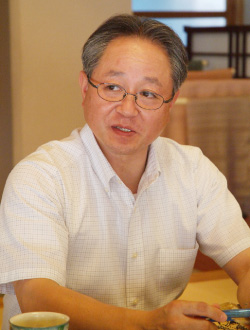KABAZAIKU - national craft
Even in the Jomon period (14,000–300 BC) cherry bark was being collected and used in daily life. The foundation for what is now called "kabazaiku" originated during the Edo period (1603 – 1868) in Akita prefecture, in Northern Japan. Whereas the literal translation is 'birch craftsmanship', birch is never actually used in this art, and it remains a mystery as to how the name got to include it. Instead, the art focuses on the beautiful, durable and versatile Cherry (Sakura) bark, utilizing Japan's unique natural resources.
The craft dates back to the time of samurai, where samurai initially made simple, small containers to carry medicine and tobacco during their free time. When the Meiji Restoration (1868–1912) centralized the power in Japan and forced the end of the Samurai and their way of life, specialized craftsmen appeared and the craft became much more complex so that more advanced products could be made.
Read more about the history of kabazaiku here.
Kakunodate, sometimes called 'little Kyoto' due to its extensive Samurai history and Sakura,
is the only place in the world where these beautiful crafts are made.
There are maybe five companies left who master the skills that have been transferred from generation to generation.

TOMIOKA SHOTEN
Tomioka was founded in 1970 in Akita prefecture, where the owner was born. Very proud of his Akita heritage and also representative of the Akita Prefecture Craft Association and the director of the Tourism Association - he is extremelt motivated to not only share the beauty of their unique kabazaiku crafts, but also the history and culture of his Akita home town.
By crafting new products and attending sales events abroad, he hopes to enrich the lives of many people with the national craft from his beloved city.
There is a lot of work and knowledge involved with the production of Kabazaiku. The bark has to be harvested from 70-80 year old wild trees as the bark from younger and cultivated trees is not tough enough. Procuring enough bark every year is one of the big challenges of the Kabazaiku art.
The production is very labor intensive and requires a lot of experience and artistic insight.
There are approximately 10 stages depending on the type of craft, the type of bark and the design.
Read more about the production process here.
Due to its airtight and antibacterial nature, kabazaiku crafts in the form of (household) containers have always been popular. Especially tea containers, for which is does not only have the perfect characteristics, but also due to Japan's tea culture.
TOMIOKA's tea container production is especially unique:

Traditional tools are used to hand craft the containers.
First the birch is shaved and coated with a special glue. After applying a straw to the warp wood and drying it, it is wrapped around a wooden mold, heated to about 200 degrees and pressed into a cylindrical shape. Three sheets are stacked on top of each other to make a prototype.

The inner container is crafted and measured to have the exact right size to ensure airtightness. The in- and ourside are glued together, and small knife is used to carefully seperate the lid and torso.

The most tricky part; applying the large piece of bark to the body of the container. The iron used needs to be perfect temperature in order not to leave wrinkles or burn the craft. Highly skilled craftsmen learn to recognize the right temperate by simply dipping the iron in a bucket of water.
Living together with the mountains

One of TOMIOKA's mottos is "living with the mountains" to show respect for the beautiful nature they are surrounded by and grew up in.
Kabazaiku products are ecological and do not harm the trees in the long run as only one-third of the bark is cut and the trees have regenerative powers, growing back enough bark for the next harvest.
During spring, scouts go on hiking into the local mountains to locate the wild trees, which are easier to spot during this season as they are in bloom. The bark is then harvested during the late summer/early autumn after Japan's rainy season, so that the bark is softer and easier to remove. Kabazaiku helps with forest conservation and the maintenance of local industries.





